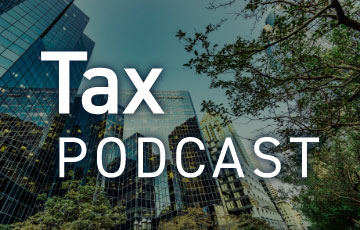Middle-market chief financial officers (CFOs) are transforming from traditional financial stewards to strategic leaders who safeguard and create business value. This evolution demands a careful balance between the traditional role of years past and embracing modernization.
We interviewed the CFOs of over 50 companies with annual revenues from $10M to $130M to understand their priorities, business growing pains and long-term vision for the finance function. Through these discussions, three key dynamics emerged as areas where CFOs are striving to find balance.
How Has the CFO Role Changed for the Modern Age?
Early CFOs were originally tasked with the financial management of the organization. Their main focus was on financial controls and accurate reporting. In other words, they controlled the company’s budget and how funds were spent. CFOs rarely planned for the future and instead analyzed historical financial data to help limit business expenses to minimize risk and maximize profits.
However, much has changed. Today’s CFOs are responsible for business planning, financial planning and analysis (FP&A) and risk evaluation — functions that are more strategic than in the past. Rather than simply managing the company’s finance, CFOs now take a forward-thinking approach, using past data and predictive analytics to forecast the organization’s future while providing financial insights.
In fact, a modern-day CFO may provide guidance on a wide variety of operational functions such as:
- Risk Management
- Investment and Debt Management
- Investor Relations and Communications
- Growth Strategy
- Business Technology and Digital Platforms
- Mergers & Acquisitions and Transactions
Top CFO Concerns: The Balancing Act for a New Form of Financial Leadership
As this job role has evolved, many CFOs have found themselves navigating nuanced problems. The most common include:
1. Finding Harmony: People vs. Technology
Amid labor shortages, retaining and engaging finance talent is a growing concern for CFOs. With limited career paths in small-to-medium-sized organizations, top middle-market CFOs are turning to automation to free their teams from manual tasks and enable them to take on more strategic and fulfilling work. For example, one CFO reduced their monthly close from two weeks to three to four days by implementing automation tools and refining their processes, allowing their team to focus on other strategic priorities such as financial analysis.
“We haven’t modernized because our team has this fear of technology. My team is so heads down in the books that they don’t look up to see the possibilities.”
On the other hand, many CFOs also recognize the fear that technology invokes in their teams. Headlines read that AI is coming for accounting jobs, and there is often hesitancy when considering learning curve for adopting technology. The rise of AI can feel threatening to teams, but savvy CFOs view it as an opportunity. By investing in training for their employees, they help safeguard their careers. The future accounting and finance teams will be comprised of those with a high comfort for using technology to augment their expertise.
Additionally, people and technology are sometimes out of harmony because the right teams are not involved when selecting and implementing new solutions. It’s often assumed that if a technology/advancement is driven by finance, it won’t work for the rest of the organization and vice versa. Leading middle-market CFOs champion early engagement across teams to ensure new systems and procedures align with the entire organization’s needs and drive buy-in throughout the process.
2. Juggling Dual Demands: Operational Efficiency vs. Strategic Growth
CFOs experience a constant tension between helping evolve the business and the administrative burden of day-to-day accounting operations. Manual, spreadsheet-heavy tasks often prevent CFOs from focusing on growth strategies. As key advisors to CEOs/owners, middle-market CFOs must start to free themselves from routine operations and manual tasks to provide crucial guidance that leaders and the organization can rely on.
“The lack of integration is my biggest struggle. It causes so much manual work. How can we get our CRM and our ERP to connect so the majority of my work isn’t in spreadsheets?”
Automating manual workflows and integrating dispersed data can help CFOs make the shift to focus on growth areas such as securing funding, counseling the executive team on growth risks, advising on mergers and acquisitions, etc. However, finding the time to automate manual tasks while both maintaining an organization’s day-to-day operations and driving growth makes the transition difficult.
“In my past three jobs, I’ve been focusing on how to automate, and how to make monthly close as repeatable and efficient as possible. If you can get your close time to three to four days, then you have three weeks to worry about anything else.”
To manage this balance, many CFOs need temporary help managing their day-to-day so they can put time into finance modernization while continuing to advise CEOs/owners. By bolstering their team, CFOs can modernize their function within a contained period of time (i.e., six months) versus modernizations that tend to extend into multiple years.
“I don’t know the right time to switch from QuickBooks to an ERP. Our company has doubled in the last five years, and my owner wants to sell in the next five years. Is now the right time?”
3. The Modernization Dilemma: Control vs. Change
As fiscal stewards that manage the profitability of their organization, CFOs, by their very nature, often feel the need for control. However, scaling businesses often outgrow traditional systems, making automation and delegation critical for maintaining accuracy and efficiency. The irony is that effectively automated business operations have better quality control than the manual and outdated systems that many CFOs feel give them better control, since effective automation lowers the risk of human error. In addition, automation often provides more data to inform decision making (i.e., ways to improve profitability). By embracing new technology and partnering with trusted advisors, CFOs can streamline operations and maintain the oversight needed to drive growth.
“I look to outside partners when I’m in over my skis – I don’t feel comfortable serving the organization as well as I’d like.”
When to modernize is often the key question, and CFOs often make these decisions based on their own personal risk threshold. Many CFOs look internally and decide that modernization becomes a priority when the risks associated with not modernizing become greater than those associated with change.
“When we set up our ERP system, our implementation manager asked, ‘How do you want this set up?’. I wish we would have made different decisions on the front end because programmers are not accountants.”
Key Considerations for CFOs Looking To Balance Dueling Demands in 2025
As CFOs embark on their journey from traditional financial stewards to strategic business leaders, there are three actions they should consider in 2025:
Use Automation To Attract and Retain the Best Talent
While accounting teams may initially be apprehensive of new technology, automation minimizes manual work and offers unique opportunities for engagement and skill development. By reducing routine tasks, employees can focus on more strategic objectives, enhance their technical proficiency and advance their career progression.
If It’s Broken, Invest To Fix It
If your team relies heavily on spreadsheets and other manual processes, consider investing in technology and automation tools. If technology has already been invested, ensure your team is maximizing its potential.
We have seen clients who invested in new systems that did not work and then became apprehensive about spending additional money to fix it. But sometimes poorly installed systems can be made much more effective with a little more investment, without requiring an entire new system.
Reducing your manual workload will open time to think strategically about your organization’s growth.
Determine Your Own Risk Threshold
The question is not “if” you should modernize, but “when.” We have found that CFOs overestimate the risk of change and underestimate the security of staying the same. And often, the cost of modernization and change increases the longer you wait (e.g., larger teams, bigger/more integrated systems/data, etc.).
CFOs should take time to think through the risks of not changing (i.e., hours wasted on manual tasks, accuracy and reliability of your data, ability of your data to inform strategy, risk of operational disruption, etc.). Once these risks are greater than the status quo, it is time to start putting together a modernization plan.
Keep in mind that modernization happens over time. You can manage changes based on available capital and low-hanging fruit opportunities (e.g., those with the biggest ROI). It doesn’t need to be an all or nothing approach.
Most Common CFO Problems: Frequently Asked Questions
Learn more about the top concerns CFOs have with the answers to these frequently asked questions.
The three top issues reported by CFOs interviewed by Cherry Bekaert included having to balance technological advancements against the security of future jobs, working on labor intensive daily tasks while making time for strategic growth and modernizing financial functions without sacrificing quality control.
CFOs were initially in charge of a company’s budget and spending. Recently, though, this executive position has become increasingly centered around strategic growth and data analysis.
To navigate the challenges of 2025, CFOs must embrace finance modernization, leverage accurate data analytics and attract top-tier talent. By adopting technologies like AI, automation and cloud-based platforms, financial leaders can streamline operations and gain deeper insights. Building agile teams with both technical and strategic skills will further enable CFOs to drive innovation and long-term growth.
One of the biggest challenges financial teams are facing is the ongoing shortage of talent. CFOs can help mitigate this by embracing on automation tools to streamline repetitive tasks and free up internal resources for more strategic work. Additionally, outsourcing accounting functions or leveraging fractional finance professionals offers a flexible, cost-effective way to access specialized experience without the burden of full-time hires. These approaches not only ease capacity constraints but also allow core teams to focus on high-impact initiatives like forecasting, scenario planning and innovation.
Your Guide Forward
Cherry Bekaert’s CFO Advisory and Finance Modernization team has experience advising middle-market executives through the transformation of their operations to help increase efficiency and profitability. Reach out to one of our team members today to learn about how our advisors can help you drive growth through modernization.









